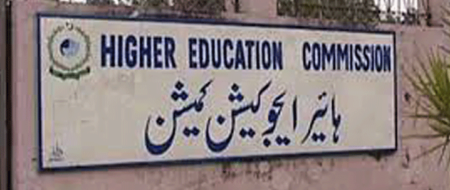Status of AJK in Political Milieu
Ershad Mahmud
Policy Perspectives, Vlm 3, No.2
Abstract
[The constitution of Pakistan affirms that the political status of entire Jammu and Kashmir Sate shall be determined only after a plebiscite whereby the wishes of the people of the state shall rule supreme. There is a consensus that AJK does not belong to Pakistan geographically yet it is not an independent state either. Its historical nexus with Pakistan as well as internal administrative and constitutional evolution provides an intriguing study. This article aims at dissecting the dilemma the territory faces. India, on the other hand, has always been vociferous in maintaining AJK as ‘Pakistani occupied Indian territory.’ The successive United Nations resolutions contain the invariable mention of the territory. The study conclusively points out the legal and constitutional irritants between Islamabad and Muzaffarabad while it focuses on the current situation and suggests corrective measures and a plausible way forward. – Editors]
The Deliverance of the State
Azad Jammu & Kashmir (AJK) is a byproduct of the division of the Dogra principality of Jammu and Kashmir that took place due to the Indian intervention in 1947–48 and a mass uprising in the Poonch areas.[1] During this period, the local populace put up a resistance movement to the Maharaja’s forces in August 1947 and subsequently also to the Indian invading forces in October 1947. As a result, the areas now forming AJK were liberated. On October 24, 1947, a provisional government was set up with its headquarters at Palandri, a small town of the area then known as Poonch; later, the seat of the government was moved to Muzaffarabad. The young barrister Sardar Mohammad Ibrahim Khan — the leader of the Muslim Conference which had led the resistance movement against Maharaja — was nominated President of the interim government.[2] Besides efforts for reforms and development of AJK, the Cabinet constituted under the President aimed to liberate the remaining areas of Jammu and Kashmir.[3] It was also declared that as soon as peace was restored, a legislative assembly for the entire state would be elected.[4]
Defining the Nascent State
Subsequently, the UNCIP implicitly recognized the de facto position of the Azad Kashmir government. Expressing his views at a meeting with the representatives of the Government of Pakistan on September 2, 1948, Josef Korbel, a member of the United Nations Commission on India and Pakistan, said: “By ‘local authority’ we mean the Azad Kashmir people, though we cannot grant recognition to the Azad Kashmir government.”[7] Besides these remarks, no other references could be found in the UNSC debate related to the status of the government of AJK.
Where does Pakistan Stand?
Pakistan’s principled stand is that the accession of the state of Jammu and Kashmir to India was neither final nor legal; the people of the state should decide through a plebiscite whether it should accede to India or Pakistan. Successive governments in Pakistan have consistently reiterated the following constitutional clause, which is also the only constitutional clause relevant to the state: “When the people of the State of Jammu and Kashmir decide to accede to Pakistan, the relationship between Pakistan and the State shall be determined in accordance with the wishes of the people of that State.”[8]
The relationship between AJK and Pakistan is twofold: in 1947, the Federal Government of Pakistan struck a deal with Muzaffarabad, commonly known as the Karachi Agreement.[9] Additionally, the AJK Constitution of 1974 gives Islamabad significant legal authority in the affairs of AJK but only through the Kashmir Council. The AJK Constitution also restricts the AJK Assembly and the Kashmir Council from making any laws regarding the following areas, which fall under the purview of the Federal Government of Pakistan:
· The responsibilities of the Government of Pakistan under the UNCIP Resolutions;
· The defense and security of AJK;
· The issue of any bills, notes or other paper currency; and
· The external affairs of Azad Jammu and Kashmir, including foreign trade and foreign aid.
In March 1949, Pakistan created the Ministry of Kashmir Affairs and Northern Areas (MKANA), which has been liaising between the Azad Kashmir and Pakistan governments, although local Kashmir authorities have always been critical of its role. (The relationship of AJK with Pakistan is discussed in more detail later in this article).
The Indian Stance
Today, the Indian Government’s position on Kashmir is:
· Jammu and Kashmir is an integral part of India since its accession;
· The uprising in the state is, thus, India’s domestic affair;
· Pakistan should vacate the territory (i.e. Azad Kashmir, Gilgit and Baltistan) that it has illegally occupied;
· A discussion on the position of Kashmir can only be undertaken within the framework of the ‘Indian constitution’; and
· A discussion on Kashmir with Pakistan can only be held under the terms of the Simla Agreement, which envisages a bilateral negotiation framework.[10]
Article 370 of the Indian Constitution gives special place to the relations of Jammu and Kashmir (J&K) with the Indian union and an accord called the Delhi Agreement provides the framework for Indian relationship with the state. The Indian Parliament passed a unanimous resolution on February 22, 1994, which defined the territories of J&K and made it binding on the Indian government to take back the “occupied territories” from Pakistan’s control. The resolution says, “Pakistan must vacate the areas of the Indian State of Jammu and Kashmir, which they have occupied through aggression; and resolves that all attempts to interfere in the internal affairs of India will be met resolutely.”[11]
At times, Indian officials have also claimed that not only AJK but the Northern Areas too are a part of the Indian union and Islamabad has to vacate them sooner or later.
On May 2, 2004, Digvijay Singh, who was then India’s Minister of State for External Affairs, appearing on BBC program “Question Time India” said “…New Delhi did not accept the Line of Control (LoC) and would not agree to turn it into international border…” He was of the opinion that the dispute also involved “Pakistan-Occupied Kashmir.”[12] The former Indian Prime Minister Vajpayee also raised objections regarding democracy and the political system in AJK in October 2001.[13]
The Indian External Affairs Secretary Kanwal Sibal also maintained that all of Kashmir belonged to India and, therefore, there was no question of New Delhi accepting the LoC as an international border. He also said that India would raise the issue of “Pakistan-occupied Kashmir” during the forthcoming bilateral talks.[14] Recently, the Indian Minister for External Affairs while responding to question said:
We would like to reaffirm that the region of Gilgit-Baltistan is a part of the State of Jammu and Kashmir, which on the basis of its accession in 1947 is an integral part of India.[15]
Moreover, Article 48 of the State Constitution of Indian-held Jammu and Kashmir mentions Azad Kashmir as an area under Pakistani control and reserves 25 assembly seats for the people of AJK and the Northern Areas (Gilgit-Baltistan).[16] All of this shows that India considers AJK a part of its own territory. Nevertheless, at the diplomatic level, New Delhi has always shown a pragmatic attitude towards Pakistan’s control over AJK and the Northern Areas.
Significant Political and Constitutional Developments
1947-60 — The Formative Phase: The provisional government of AJK was formed on October 24, 1947.[17] It announced a balanced and non-communal declaration reaffirming the principle of the freedom struggle. In fact, the AJK government started from scratch with no experienced staff and administration available to run government affairs. It had no offices, no records; not even a typewriter to carry out the official work. But in order to liberate the entire state of J&K, the government raised an army of war veterans from the Poonch and Mirpur regions.[18]
There was neither a constitutional framework nor a legal setup to function within. The government defined itself as a “War Council” formed with the sole objective of liberating the parts of J&K that remained under Indian control. This government worked on an ad hoc basis until the ceasefire agreement was signed between India and Pakistan on January 1, 1949. This made it clear that the AJK government now had to devise a structural setup to improve the lives of its people.[19] Subsequently, AJK government formalized the rules of business for running the administration. The executive as well as the legislative authority was vested in the President. In 1948, courts were created and law codes were introduced to run the judicial administration. Some laws of Punjab were adopted for the state while a good body of the former Jammu and Kashmir State Code was retained.[20]
A factional rift: Constitutionally, the AJK President was responsible for all state affairs through the democratically elected government. However, when Chaudhary Ghulam Abbas (1904-67) migrated to Pakistan from Indian-held Kashmir 1949, he became the supreme head of the largest political party — the Muslim Conference (MC).[21] On March 2, 1949, the Working Committee of the MC adopted a resolution that gave significant powers to the supreme head, which resulted in a paradigm shift in the power structure. The supreme head was given the power to appoint the president and other members of the council or ministers, who would be collectively responsible to him. The government of Pakistan recognized the supremacy of Chaudhary Abbas and his Working Committee.[22] Unfortunately, a few political figures could not get along so well in the new setup, chiefly Sardar Ibrahim. Chaudhary Abbas was instrumental in the sacking of Sardar Ibrahim’s government in May 1950, which ultimately led to a mass uprising against the non-democratic powers of the supreme head.[23]
The Abbas-Ibrahim clash was a reflection of ideological and political beliefs as well as the future ambitions of the two factions. In fact, the two leaders held two very different sets of opinions on how to conduct the affairs of AJK. Chaudhary Abbas, a towering leader of the Muslim Conference from Jammu City, had enjoyed good relations with Quaid-i-Azam Muhammad Ali Jinnah (1876-1948) and the then ruling elite of Pakistan. He was not in favor of establishing a democratic set-up as he thought that electoral politics would take leaders, parties and the people away from the cause of liberation. Above all, the AJK politics revolved around a clan system, and Chaudhary Abbas, being from the other side of the LoC, had no roots in the area. Critics maintain these were the reasons for Chaudhary Abbas’ mindset. A large number of refugees from Jammu and a handful of ethnic Kashmiri political activists settled in various cities of Pakistan. With a bitter legacy, these people tried hard to succeed in the political arena at each other’s expense. Those from the Kashmir Valley wholeheartedly backed Sardar Ibrahim, while those from Jammu stood by Chaudhary Abbas. The ethnic and linguistic divides also impacted negatively on the local polity, eventually pitching the local people and the refugees against each other.
Sardar Ibrahim had a huge support base and was a popular leader of his time. He was one of the few local people who were highly educated and articulate. His rich background and sudden rise to the top position made him a hard bargainer and unflinching in matters of principle. Summarily, the infighting and the petty politics of power lessened the two leaders’ leverage and made them personae non gratae in the corridors of Pakistan’s Ministry of Kashmir Affairs.
On the other hand, in Pakistan, the demise of the country’s founding father derailed the country. The civil and military bureaucracy prevailed on the political horizon and, eventually, the military seized power in October 1958. The shift from democracy to dictatorship in Pakistani politics heavily impacted AJK politics, slowing the democratization process further. The military-led establishment appointed and sacked AJK’s rulers on the basis of personal likes and dislikes. The Ayub government, in particular, had little tolerance for political opponents. The people of AJK, who had earlier experienced the tyrannical rule of the Maharaja, were not prepared to accept another dictator. Their urge for representative government was unprecedented and enjoyed widespread support. For a dispassionate study of the dynamics of the AJK political history and major constitutional developments, this political background framework must be borne in mind.
Flawed from the outset: In order to meet the popular demand for civil rights and a democratic set up, the AJK government revised its Rules of Business with the consent of the Ministry of Kashmir Affairs and Northern Areas (MKANA), thrice in a short span of eight years.[24] The purpose of these revisions was to devise a framework for smooth functioning of the state machinery. However, the government failed to devise a workable power-sharing formula between Chaudhary Ghulam Abbas and Sardar Ibrahim. For instance, in December 1950, the Ministry of Kashmir Affairs introduced new rules investing all executive and legislative powers in the supreme head of the Muslim Conference. Under the rules, the supreme head had extensive powers to nominate the president and the council of ministers. Thus, the entire government, including the president, was responsible to the supreme head of the Muslim Conference, i.e., Chaudhary Abbas. In fact, all legislation required the Supreme Head’s prior approval.[25]
The Rules of Business were revised for the second time in 1952, purportedly to create a balance of power. However, instead of giving the vote to the people, these rules vested full powers in the MKA and weakened the grip of the Muslim Conference on state affairs. The appointment of president was the sole prerogative of the Muslim Conference and duly recognized by the MKA. Above all, the appointment of the heads of government departments, and the judiciary, was necessary to have MKANA’s consent.[26] This arrangement created disturbance as well as ill-will against the federal government. These revisions reduced the status of AJK government to that of a municipality. The local political groups expressed their anger vociferously and organized several protests to demand democratic rule, but to no avail.[27]
The third revision of the Rules took placed in November 1958. Strangely enough, the Joint Secretary was replaced by the “Chief Adviser” through this revision. The new amendment could not contented public aspirations as the Chief Adviser was selected by the MKANA not the government of AJK. To add insult to injury, all functions of the government were exercised in the name of the president, while the real power was vested in the hands of powerful MKANA officials. The AJK government was not allowed to create a post that required a monthly salary of over Rs.150, and was not allowed to spend over Rs. 100,000 without the permission of MKA.[28]
The AJK masses remained without adult franchise from 1947 to 1960; no election was held during this period, and persons who enjoyed the confidence of the Working Committee of the Muslim Conference were nominated as the President of Azad Jammu and Kashmir. In the meantime, as noted earlier, the Muslim Conference split into two factions, one headed by Chaudhary Ghulam Abbas and the other by Sardar Ibrahim Khan. In the early 1950s, the two leaders’ differences made headlines. Analyzing this situation, the renowned Kashmiri historian Yousaf Saraf says, “Abbas group was straining every nerve to deprive the Azad government of as much power as possible. It also seemed to suit the convenience of the MKA. Mr. M.A. Gurmani, the minister without portfolio who was in charge of Kashmir affairs, had his permanent office in Rawalpindi. He was playing one group against the other. As a result of these intrigues and counter-intrigues, the Azad Kashmir government was deprived of important powers.”[29]
1961-70 – Crawling to a Democratic Era: In October 1958, General Muhammad Ayub Khan took over power and totally banned political activity in Pakistan and AJK. He dismissed the government of Sardar Ibrahim Khan (1957-59) in November 1959 and appointed K.H. Khurshid (1924-88) as the new president.[30] After establishing his writ over state affairs, Ayub Khan introduced the idea of “basic democracies” to legitimize his military regime. The “basic democracies” were extended to the AJK through the Basic Democracies Act of 1960, under which the President and the Azad Kashmir Council were to be elected indirectly by the members of various local bodies that were elected directly.[31] Thus, the President of AJK was elected in 1961 through an electoral college of 1,200 “basic democrats” in AJK and another 1,200 who represented Kashmiri refugees in Pakistan. Interestingly, Chaudhary Ghulam Abbas and Sardar Ibrahim were disqualified from participating in the elections by a tribunal on the charges of corruption.
Mr. Khurshid became the first AJK president to be elected by these members. Although, he enjoyed a good relationship with the President of Pakistan, who off and on praised him, the bureaucracy did not like this situation and refused to abandon its old working style which, in due course, ended up in an intense rift between the top bureaucracy of MKA and the Khurshid-led administration.[32] At times, officials simply declined to obey the President’s orders. At the same time, Mr. Khurshid could not improve his relations with Chaudhary Abbas, who also encouraged the President’s opponents to dislodge him from the top office. Eventually, this power struggle led to Mr. Khurshid’s unceremonious resignation.[33] During his term a new act was introduced which did not bring any significant change in the legal framework save humiliation. According to it, the State Council could not undertake any legislation without the previous consent of the chief adviser and no law could take effect unless the chief adviser directed so by a notification. In fact, it undermined the already fragile civilian control over government and strengthened the all-powerful MKANA.
It is a sad fact that the people of AJK had to struggle to achieve basic democratic rights for over two decades. When the Maharaja’s autocratic rule came to an end, it had seemed obvious that a democratic rule would be established, but this could not happen for reasons outlined above. Leaders from across the political spectrum were tired of the MKANA’s insatiable desire for power, and were now desperate to be done with this situation. The premature departure of the first elected president, K.H. Khurshid, had a tremendous psychological impact on local politics. It compelled thinking persons in AJK to resist the unnecessary interference of the MKA; and the desire for a workable representative system of governance and the willingness to forge unity for such a system, were strengthened.[34]
In this context, the leading political parties headed by Sardar Ibrahim Khan, Sardar Muhammad Abdul Qayyum Khan (b. 1924), the political successor of Chaudhary Abbas, and Mr. Khurshid formed an alliance to throw off the MKANA hold in August 5, 1968. There was a wave of agitation, not only in AJK but also in major cities of Pakistan. The heads of this three-party alliance demanded an elected and responsible government, with an elected president, legislature and full powers of legislation, including the power to approve the state’s budget.[35]
In Karachi, an All-Parties Kashmir Committee organized a procession, while in Muzaffarabad a violent demonstration was staged outside the President office on Dec 27, 1968. The Pakistani media and political parties also demanded implementation of the same system of governance in AJK as in other parts of Pakistan. Meanwhile, various political parties of Pakistan launched a massive agitation campaign against the Ayub regime, which resulted in his resignation but also paved the way for another martial law, by General Agha Muhammad Yahya Khan in 1969.
1970-74 — The Process of Constitution-Making: The Ayub regime had tried to establish its particular brand of democracy in Muzaffarabad. Likewise, the new martial law regime of General Yahya Khan had its own political agenda for AJK. The Yahya regime had already made some constitutional changes: it dissolved the ‘one-unit system’ and also held, for the first time in the country’s history, free and fair elections. The military-led administrations had, quite often, showed a resolve that they were ready to tackle the most complex and sensitive problems of Pakistan.
The political leadership of AJK had been demanding elected government on the basis of adult franchise for a long time. Incidentally, at the same time, the people of Pakistan were vigorously demanding free and fair election in both East and West wings of Pakistan. The federal government appointed Abdul Hameed Khan, a soft-spoken retired army general, as the Minister for Kashmir Affairs in 1969. He met with the leaders of the three major parties and assured them that the federal government would soon introduce democratic rule in the area. Subsequently, he appraised the three-party alliance leaders about proposed constitutional changes and invited them to give their suggestions.[36] He also formed an interim government to draft a new constitution for AJK and hold fresh elections on the basis of adult franchise.[37]
There is no denying the fact that, up to 1970, the fate of AJK governments largely depended on the all-powerful bureaucrats of the Ministry of Kashmir Affairs that were the kingmakers. The bureaucracy would not let any head of the AJK government work independently and freely. However, the ruling groups were, by and large, neither oppressive nor totalitarian. It is true, however, that, at times, political dissidents were victimized by various governments.[38] During these years, different groups and personalities had always raised their voices in support of democratic rule in the area.
The change of mindset bore results: Kashmiri leadership’s unanimous demand for democratic rule and change in Islamabad’s approach finally bore fruit in 1970. A democratic set-up was established in Azad Kashmir through the 1970 Act and presidential elections were held on “one person one vote” democratic formula. The state subject law of 1924, which bars non-Kashmiris to obtain state citizenship, was also made part of the constitution. The Presidential system worked for about four years; was subsequently replaced by the parliamentary system under the Azad Kashmir Interim Constitution Act, 1974 in August the same year.[39]
For the first time in 1970, the Legislative Assembly and the President of Azad Jammu and Kashmir were elected by the people of Azad Kashmir and the refugees of Jammu and Kashmir settled in Pakistan.[40] The Assembly consisted of 24 elected members and one lady member elected indirectly by the fellow members. The Assembly, however, had limited legislative powers; particularly it had no role in matters related with defense, currency, UNCIP resolutions and foreign affairs. It had the powers to remove the elected president by two-third majority.
The 1974 onwards: The Parliamentary setup: With the introduction of a new constitution in Pakistan in 1973, which was parliamentary in structure, a wave of change also gripped people in Azad Kashmir who raised voice for a parliamentary form of government in the state. Meanwhile, the Pakistan Peoples Party’s newly established branch in AJK demonstrated its eagerness to replicate federal parliamentary system in the area. Secondly, it is widely believed that Prime Minister Zulfikar Ali Bhutto (1924-77) had some sort of understanding with his Indian counterpart Indira Gandhi (1917-84), to settle the Kashmir issue on the basis of the status quo. In this backdrop, he strived to integrate the AJK with the rest of Pakistan. He even offered the people of the AJK to become the fifth province of Pakistan.[41] At the same time, he also introduced many administrative changes in Gilgit and Baltistan for their territorial integration with the rest of the country.
The federal government, too, encouraged aspirants of parliamentary system. Following an accord with the local political parties, on June 10, 1974, ministry of Kashmir affairs announced a new legislative arrangement for AJK. The act of 1970 was modified and reenacted as the Azad Jammu and Kashmir Interim Constitution Act of 1974. This included 42 members (including two women to be elected by the legislative assembly members) elected directly on the basis of adult franchise for a five-year term.[42] Furthermore, Islamabad institutionalized its relationship with Muzaffarabad by establishing a new body called Azad Jammu and Kashmir Council headed by the Prime Minster of Pakistan.
The Institutionalization of relationship with Pakistan
Under the new Constitution the 11-member Council is headed by the Pakistan prime minister as its Chairman while the AJK president is its vice–Chairman. This largely reduced the role Ministry for Kashmir Affairs’ but minister in charge of MKANA is still ex-officio member of the council. Therefore, the ministry officials lost direct control of Azad Kashmir’s internal affairs but still maintain indirect role (that will be discussed subsequently). Under this arrangement, Pakistan’s prime minister nominates five members of Pakistan Assembly to the council while the AJK Assembly elects six members on a proportional representation [of political parties] basis from amongst its members.[43]
The basic idea of forming the council was to reduce direct powers of the ministry and establish the writ of the elected body and also to raise the level of interaction between Islamabad and Muzaffarabad by making the prime minister of Pakistan chairman of the council. Despite these measures, the 1974 act failed to evolve a balance and consensus formula to sharing of powers between AJK government and the council. Now the balance is heavily tilted in Kashmir council’s favor often rendering the AJK assembly helpless. The constitution places 52 subjects under the jurisdiction of the council. Following are some of the significant powers which council enjoys, which illustrates its magnitude and influence over AJK legislative body as well as government.
a) Subject to the responsibilities of the Government of Pakistan under the UNCIP Resolution, nationality, citizenship and migration from or into Azad Jammu and Kashmir, and admission into, and emigration and expulsion from, Azad Jammu and Kashmir, including in relation thereto the regulation of the movements in Azad Jammu and Kashmir of persons not domiciled in Azad Jammu and Kashmir.
b) Mineral resources necessary for the generation of nuclear energy.
c) Banking, that is to say, the co-ordination with the Government of Pakistan of the conduct of banking business.
d) The law of insurance and the regulation of the conduct of insurance business.
e) Stock exchange and future markets with object and business not confined to Azad Jammu and Kashmir.
f)






